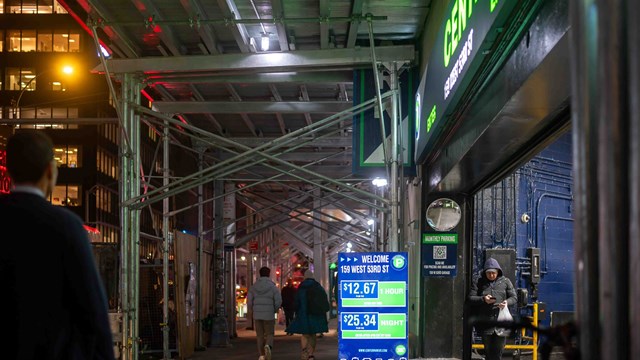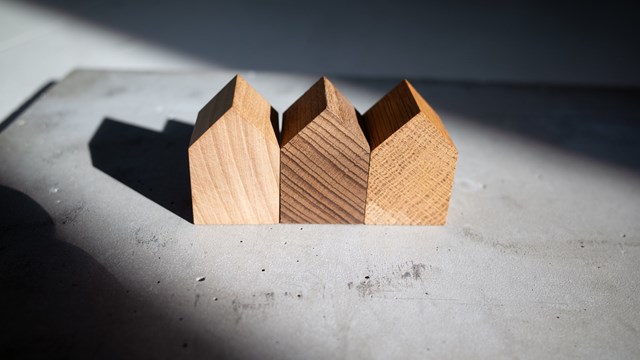When the topic of exterior maintenance comes up, it’s important to keep in mind that when it comes to multifamily properties, even projects that focus on a building’s ‘envelope’ are by no means limited to just the façade or roof. Projects like repointing; brick, clapboard, or siding replacement; ornamental repairs; and window replacement, while fundamentally exterior, can require access to and use of interior spaces—and can sometimes cause disruption and damage to those spaces. The key to successful execution of such projects is selecting a competent professional to do the job, managing it correctly, and perhaps most importantly, maintaining proactive, transparent communication between board, residents, and contractors throughout the duration of the project.
Not-So-Good Vibrations
Giulia Alimonti, senior architect with CTLGroup, an international architectural and engineering firm with offices in New York and Chicago, says, “There are always concerns about the effects of exterior work on building interiors and apartments because there are shared walls or surfaces. Many residents have artwork on their interior walls that back up to exterior walls. Depending on the work to be undertaken, there may be vibrations through the wall. Notice should go out to all residents to remove all objects from shared walls. The most appropriate action is for the contractor to give a detailed calendar of construction, detailing when the work will be at its most noisy, when they will use drills, etc., so tenants can plan accordingly.”
Bill Mackey, a senior project manager with Becht Engineering in Boston, makes similar observations about exterior projects involving clapboard and other types of siding. “In a recent replacement job,” he says, “we had nail pops on interior walls that backed up [to] exterior walls. Little bits of plaster or joint compound that cover nails can pop, and the result is an indentation on the wall. They have to be repaired and repainted. Residents must also take all items off the interior walls that could get knocked off due to vibrations and banging and may be damaged. The most important thing to do is to communicate to residents what to expect—full disclosure.” He adds that major construction projects are by their nature disruptive, and while damage or breakage is never intentional, it’s inevitable—but proper notice and preparation ahead of time can reduce the risk.
Windows
Another major undertaking in any community, large or small, high-rise or townhouse, is the replacement of windows. Window replacement is almost always a community-wide project; both for reasons of economy of scale in purchasing and labor, and to maintain a uniform look throughout a property, it’s very rarely done on a single unit basis.
The first question is whether window replacement should be considered an exterior or interior job. In many ways it’s both, even though most people think of it as exterior work, since windows protect us from the elements outside our homes.
Alimonti differs. “Window replacement is really an interior job, because it requires interior access,” she says. “Removal of old windows, prep for the new ones, and reinstallation are all done from inside—so it’s crucial to coordinate with tenants. Have them remove everything from at least six feet from the windows so contractors can do work without damaging anything. The nightmare scenario is when a resident doesn’t do that, and then accuses the contractor of damage. In some apartments there can be a problem if the walls adjacent to or under the windows are mirrored, or covered with marble, because those surfaces are prone to damage. Another item to consider is radiator cabinets, which should be removed before window replacement, and may require alteration after. The best policy is to do a thorough survey before beginning the project.”
Mackey concurs. “Interior access is needed to remove and reinstall windows and doors, etc.,” he says. “The contractor will have to reinsulate and seal casings. The process can cause interior damage. Just to get the old window out, you need access to the interior of the units. Anything near the windows must be removed. The installers also must have a work area. Furniture of any kind, curtains, shades, etc. must be out of the way so that the installers can work effectively and as quickly as possible.”
And like pretty much everything else, Mackey says the pandemic has complicated things. “Pre-COVID,” he continues, “it was fairly easy to arrange interior access and get work done quickly. Now, not so much. Frankly, it’s dramatically more difficult. Everyone has to mask up. If anyone tests positive in the unit where the job is underway, the rest of the job has to be delayed until negative tests are obtained from everyone exposed.” And if a worker tests positive, “contractors would have to quarantine and that would also delay the entire project.” That’s where management plays a critical role. “Managers must contact the owners and act as the traffic cop to keep things moving smoothly,” says Mackey.
Water, Water, Everywhere
Water and weather pose an additional threat to interior spaces during exterior maintenance projects. “Water leakage is a problem when work is ongoing and bricks or other exterior materials are missing,” says Alimonti. “At the end of each day’s work, the workmen should cover every exterior wall with removed bricks or other open spaces with plastic tarp [to] prevent infiltration by water. This also helps block cold weather and wind.” Alimonti recalls an instance when work crews didn’t protect the exterior walls with tarp while waiting on the delivery of some terracotta replacement tiles, and the building’s interior pipes froze and burst on a very cold night, causing terrible leakage—and a lawsuit.
Noise
Along with communication, Mackey also stresses the importance of working with competent, reliable, experienced contractors as a major factor in successful exterior maintenance projects. “First of all, the contractor must have a good crew. No swearing, yelling, screaming, music playing. That’s simply not acceptable; these are people’s homes. Control that noise, because the noise from saws, etc., can’t be controlled. Crews can also start noisy work a little later. They can arrive at 7:00 a.m. to prep for the day, but wait to start using noisy machinery until 8:00 a.m.”
Alimonti adds that “for exterior work, noise from small tools is to be expected and must be accepted, but from large tools like jack hammers, no. Those can also cause actual damage. In New York, controlling dust is mandated by the Department of Buildings (DOB), but it’s impossible to eliminate it completely. Handheld tools must have vacuum bags, windows should be kept closed, and A/C units covered from the outside.”
Legal Considerations
So given all that, what should a co-op or condo board do if a contractor hasn’t lived up to their agreement or has caused damage or other problems?
“Large projects in co-ops and condominiums are never easy, particularly when something goes wrong,” says Mark Hakim, an attorney with Manhattan-based law firm Schwartz Sladkus Reich Greenberg Atlas. “The majority of the time things run smoothly, but when they don’t, it creates stress for the board members, the shareholders, and all the professionals involved. When a large project is underway at a co-op or condominium, the work is usually subject to a highly negotiated agreement, typically one promulgated by the American Institute of Architects (AIA). These AIA forms often detail how disputes are to be governed, and what is required for either party to terminate [the contract], whether or not for cause.”
He goes on to say that “terminating a contract—particularly in a large scope project that is already underway—is a decision that should never be taken lightly or made hastily. Replacing a contractor midway through a job is quite difficult and often comes with its own issues and problems. The existing contractor may not leave quietly and may disagree vehemently with the allegations being made. The new contractor may very well come in and not want to make any sort of warranty or guarantee as to the previous work performed.
“We recommend that before any contract is terminated, a board and its professionals, including their architect, meet and discuss the issues in order to resolve them. Give them concrete examples of the problems, as well as deadlines and opportunities to resolve them. It’s imperative to place [contractors] on notice of the issues and offer them an opportunity to cure the problem, if it can still be cured.”
That said, however, “a board should not wait too long, or give the contractor too much proverbial rope before considering termination. We feel it is always best to try to amicably work out the issue before terminating a contractor and believe that many issues can be resolved with communication. The board should always consult counsel and their architect, and review the AIA, and thereafter propose a framework for resolution and, if necessary, for termination.”
Every community and board will eventually have to navigate the process of a major exterior repair or replacement project—but with prudent planning, clear, transparent communication, and a proactive approach to potential problems that may arise, it can be a smoother, less disruptive experience for all.
A.J. Sidransky is a staff writer/reporter for CooperatorNews, and a published novelist. He can be reached at alan@yrinc.com.










Leave a Comment